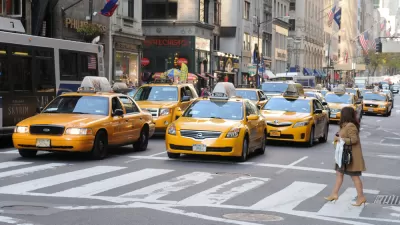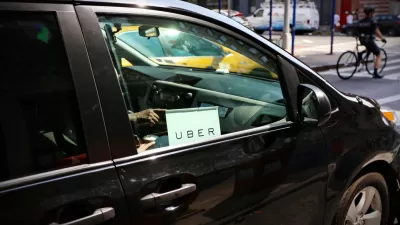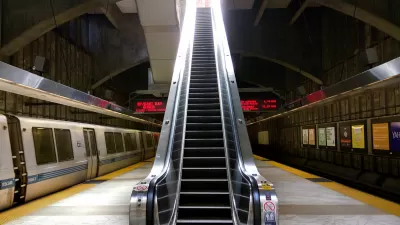Many of the places in Chicago generating the most ride-hailing trips with services like Uber and Lyft are accessible by transit, according to new research.

Oriol Marquet, a researcher from the University of Barcelona, has published new research on the effect of land use at trip origin and destination on demand for ride-hailing services like Uber and Lyft.
The paper, titled "Spatial distribution of ride-hailing trip demand and its association with walkability and neighborhood characteristics" and published recently by the journal Cities, examined records of 32 million ride-hailing trips in the city of Chicago to identify how land use determines the use of ride-hailing services.
According to a Tweet posted by Marquet, the paper identifies "worrisome trends," namely, that "61% of ride-hailing trips are between highly walkable areas," and areas that offer more sustainable forms of travel. As put in the paper's abstract, "Ride-hailing is predominantly being used to travel between highly accessible areas which should be accessed using more sustainable transport modes."
The paper adds a land use angle to previous research that found evidence that many ride-hailing trips are being made at the expense of transit trips, as first revealed by a study performed by Regina Clewlow in October 2017, and contributing to a decline in transit use in urban areas.
According to another Tweet by Marquet, "Ride hailing does not seem to be a viable alternative for low-income households or for those with no car access. This suggests that even at the currently heavily-subsidized low prices, Uber and Lyft cannot substitute for public transit in low-income areas." The trip data was generated between November 1, 2018 to June 28, 2019, so the research comes with the caveat that the data and findings reflect mode choices and trip generation in the time before coronavirus.

Study: Maui’s Plan to Convert Vacation Rentals to Long-Term Housing Could Cause Nearly $1 Billion Economic Loss
The plan would reduce visitor accommodation by 25,% resulting in 1,900 jobs lost.

North Texas Transit Leaders Tout Benefits of TOD for Growing Region
At a summit focused on transit-oriented development, policymakers discussed how North Texas’ expanded light rail system can serve as a tool for economic growth.

Using Old Oil and Gas Wells for Green Energy Storage
Penn State researchers have found that repurposing abandoned oil and gas wells for geothermal-assisted compressed-air energy storage can boost efficiency, reduce environmental risks, and support clean energy and job transitions.

How Madison’s Tree Planting Efforts Are Growing a Healthier Community
Madison’s annual tree planting initiative is enhancing environmental resilience, public health, and community livability by adding 1,400 carefully selected trees citywide, with strong community and institutional support for urban forestry.

Texas State Bills Could Kill Transit Funding in Dallas, Austin
State lawmakers could pull funding from the state’s largest transit agency and the ambitious Project Connect, a voter-approved transit project in Austin.

Opinion: DC Encampment Sweeps Hide, but Don’t Solve, Homelessness
President Trump recently ordered the clearing of encampments built by unhoused people on federal land in Washington, D.C.
Urban Design for Planners 1: Software Tools
This six-course series explores essential urban design concepts using open source software and equips planners with the tools they need to participate fully in the urban design process.
Planning for Universal Design
Learn the tools for implementing Universal Design in planning regulations.
Ascent Environmental
Borough of Carlisle
Institute for Housing and Urban Development Studies (IHS)
City of Grandview
Harvard GSD Executive Education
Toledo-Lucas County Plan Commissions
Salt Lake City
NYU Wagner Graduate School of Public Service





























